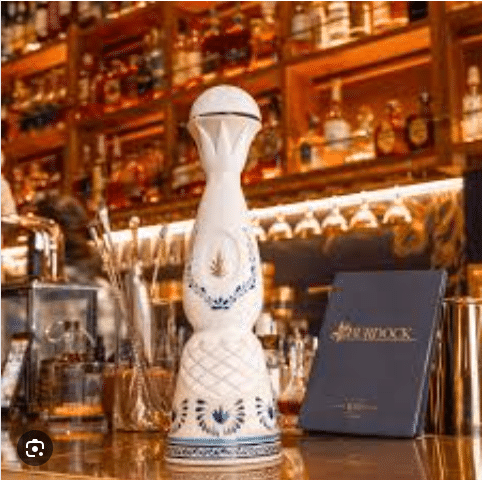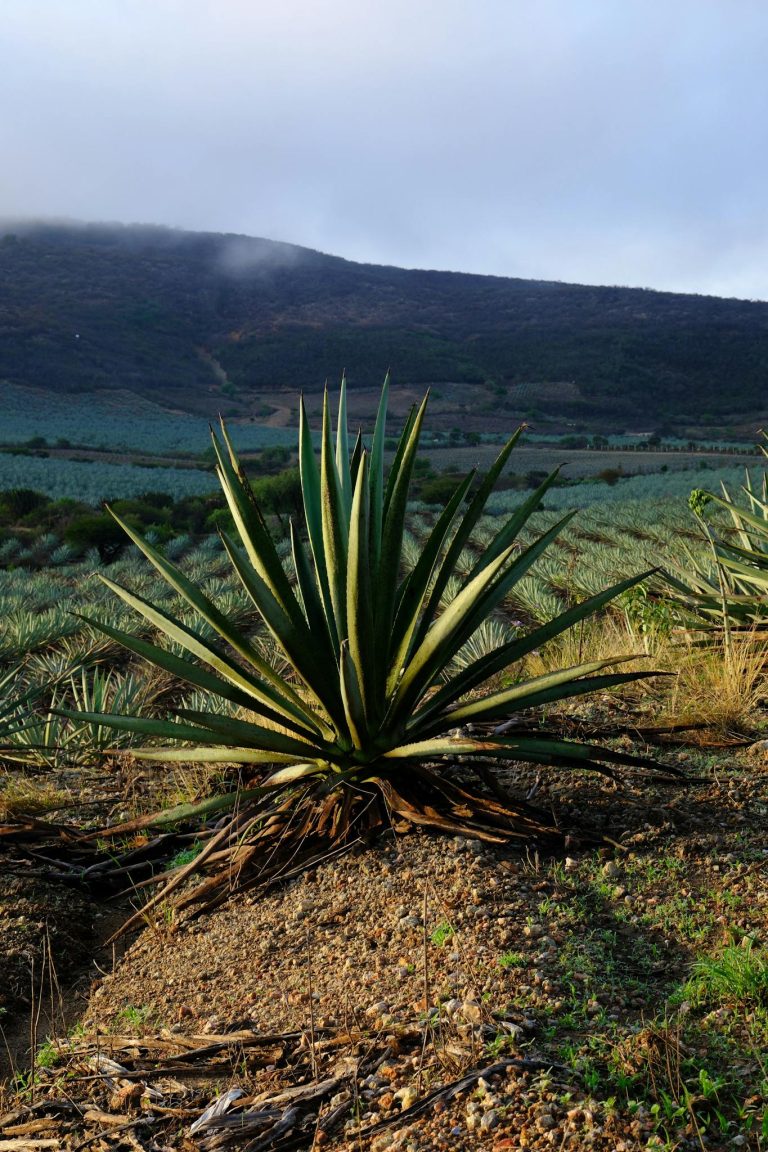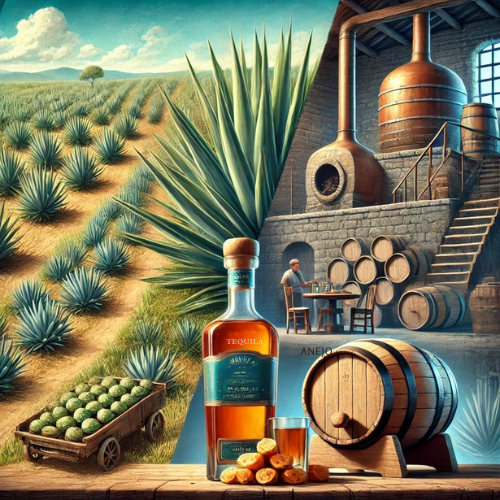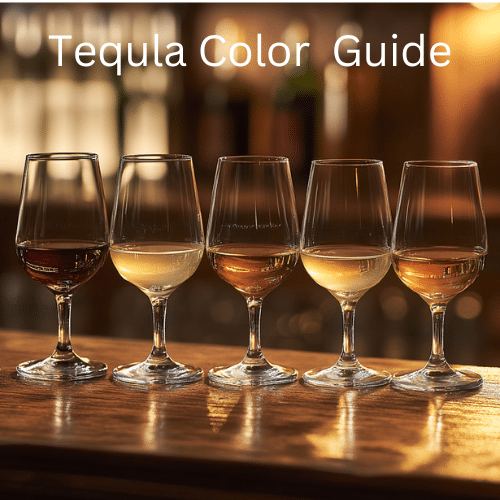What is Añejo Tequila? Ultmt. Guide to Premium Aged Tequila
Did you know that Añejo tequila must be aged for at least one year in oak barrels to…

Did you know that Añejo tequila must be aged for at least one year in oak barrels to earn its distinguished name? I’ve spent years exploring the world of premium tequilas, and I’m excited to share everything you need to know about this remarkable spirit! From its deep amber color to its complex flavor profile, Añejo tequila represents the pinnacle of Mexican craftsmanship. In this guide, we’ll explore what makes Añejo unique, how it’s made, and why it’s becoming increasingly popular among spirits enthusiasts worldwide.
Understanding Añejo Tequila: Definition and Requirements

After diving deep into the world of agave spirits, I still remember my first taste of a proper añejo – it completely changed my perspective on what tequila could be.
So here’s the deal with añejo tequila: according to the official Mexican standards (called NOM-006-SCFI-2012), it’s got to spend at least one year, but less than three years, hanging out in oak barrels. Any less time and you’re looking at a reposado, any more and you’ve crossed into extra añejo territory.
There are other regulations regarding oak barrels as well. The regulations say these barrels can’t be bigger than 600 liters, but most producers stick with smaller ones, usually around 200 liters. Most producers tend to use American white oak barrels, some get creative with French oak or even mix different types. Each oak variety can add it’s own distinct flavor. Extra añejo tequila often has notes of vanilla, caramel, and spices. Thats the beauty of oak barrel aging. One of my favorite añejo tequilas is Patron Añejo. You can go to their FAQ page to see some fun facts about their products.
Let me break down how añejo fits into the whole tequila family:
- Blanco (also called silver or plata): This is the fresh-faced rookie – completely unaged, straight from distillation
- Reposado: The teenager of the bunch – aged 2 months to just under a year
- Añejo: Now we’re talking grown-up territory – 1 to 3 years aging
- Extra Añejo: The wise elder – aged over 3 years
The aging process seriously transforms the tequila. While a blanco gives you all that bright, peppery agave punch, añejo mellows things out with vanilla, caramel, and these amazing woody notes. It’s interesting to see how much the flavor profile shifts – I’ve got a bottle of añejo that reminds me of butterscotch.
One thing that took me forever to figure out was the color. The rules don’t specify a required color for añejo, but that time in oak naturally gives it this gorgeous amber hue. Though heads up – some producers do add a bit of caramel coloring but the best ones let the barrel do all the work.
Temperature plays a huge role in the aging process too. The ideal temperature for aging tequila is between 50-55°F (10-13°C), storing it in a cool, dark place with consistent temperature to maintain its quality and flavor; it is best to avoid extreme temperature fluctuations or direct sunlight.
It’s wild to think that something as simple as sticking tequila in a barrel for a year can create such a different spirit. But those official NOM requirements exist for a reason – they’re preserving traditions that go back generations while ensuring consistent quality. That’s something that we can all appreciate.
The Production Process: From Agave to Aged Excellence
I’ve spent years learning about tequila production, and let me tell you; watching a jimador harvest agave with lightning-fast precision still blows my mind every time. These guys can spot a perfectly ripe Blue Weber Agave from 50 feet away. By the way you can there are tours you can take to some magical distilleries in Mexico.
First things first – you can’t make great añejo without starting with perfect agave. The Blue Weber Agave (Agave tequilana Weber) has got to grow for at least 7-8 years before it’s ready. The jimadores look for plants with leaves that have started to yellow slightly – that’s how they know the piña (the heart of the agave) has reached peak sugar content.
The cooking process is where things get really interesting. Traditional producers use brick ovens called hornos, and man, the smell when those ovens are going is incredible! The piñas cook for around 48-72 hours at low temperatures, slowly converting all those complex carbohydrates into fermentable sugars. Some modern distilleries use autoclaves (stainless steel cylinders), however, traditional hornos tend to give a more complex, roasted flavor profile.
After cooking, it’s extraction time. Old-school places still use a tahona – this massive volcanic stone wheel that crushes the cooked agave. It’s extremely inefficient compared to modern roller mills, but some swear it produces a superior flavor. I’ve done side-by-side tastings of tahona vs. roller mill tequilas, and I notice a subtle but noticeable difference.
The fermentation stage is where water and sugar are added as a mixture to later include the yeast. The fermentation typically takes 3-5 days, depending on temperature and other factors. The bubbling tanks smell amazing (sweet agave).
Distillation usually happens twice. The first distillation (called ordinario) gets you to about 30% alcohol, and the second brings it up to around 55%. Here’s something cool I learned: many producers make their cuts based on sound and smell rather than scientific measurements. It took years of experience for them to know exactly when to make the cuts by listening to the still and smelling the vapor.
Then comes the aging process, which is where añejo really becomes añejo. The barrel selection is crucial. Most maestro tequileros use ex-bourbon barrels because they’re relatively affordable and impart lovely vanilla and caramel notes. But some get creative with wine barrels or even cognac casks.
The aging location matters way more than I initially realized. Most aging warehouses in Jalisco aren’t climate controlled, so the tequila experiences natural temperature fluctuations. This can lead to a phenomenon called “angel’s share”; where during the aging process, a tequila barrel can lose up to 10% of the liquid to evaporation in a given year.
Every time I sip a well-made añejo, I think about this incredible journey from field to glass. It’s amazing how each step; from harvest to cooking, fermentation to distillation, and finally aging leaves its mark on the final product. No wonder it took centuries to perfect this process!
Flavor Profile and Characteristics
I’ve been lucky enough to taste many añejos over the years. And one of the things that fascinates me is the color of the añejos. Most añejos land somewhere between pale honey and deep amber. The funny thing is, that color can be a bit deceiving. I’ve tasted lighter-colored añejos that packed way more oak influence than their darker cousins. That’s because the color doesn’t always directly correlate with how much flavor the barrel imparts. Most of the time it comes down to how “active” the oak is and how many times the barrel has been used.
Another thing that fascinates me is the aroma. A good añejo is like a desert sunset in a glass! When I first started exploring añejos, I was blown away by how different they smelled from blancos. You’ve got these beautiful vanilla and caramel notes from the oak , but underneath, there’s still that gorgeous cooked agave sweetness. I always tell people to look for butterscotch, toasted nuts, and even subtle chocolate notes. Sometimes you’ll catch hints of dried fruit or coffee too.
The flavor evolution in your mouth is what’s most fascinating of all. The first sip usually hits you with those oak-influenced notes, vanilla, caramel, and maybe some baking spices. Then the agave starts peeking through, this is where things get interesting. Some añejos maintain a prominent agave character, while others let the oak take center stage. Neither style is “better”, it’s all about what the tequilero is trying to achieve.
I’ve noticed some fascinating regional differences too. Añejos from the highlands (Los Altos) tend to start with more citrusy, floral agave notes before the oak influence, while valley añejos often have this earthy, peppery thing going on underneath the barrel aging. The altitude and soil affect the base spirit’s character, which carries through even after aging.
Comparing añejo tequila to other aged spirits has been a fun journey. Unlike bourbon, which has to use new oak barrels, añejo tequila often uses previously used barrels, which can make the oak influence more subtle. I once did a blind tasting comparing añejo tequila with cognac and aged rum, it was mind-blowing how many similar notes they shared! Though the agave base always gives añejo away; it’s got this unique sweetness that you just don’t find in grain or sugarcane spirits.
Temperature really changes the experience too. I used to drink my añejo straight from the liquor cabinet until a tequilero showed me how letting it warm up slightly in the glass releases so many more aromatics. Now I always let it sit for about 5-10 minutes before diving in. The transformation is incredible – all these subtle notes start emerging that you’d totally miss otherwise.
The mouthfeel is something that took me ages to appreciate properly. A well-made añejo should feel silky smooth, with none of that harsh alcohol burn you might associate with younger tequilas. The aging process helps everything integrate beautifully, creating this lovely viscous texture that coats your palate. Though I’ve definitely had some that were almost too smooth, sometimes you want a little of that agave bite to remind you what you’re drinking! Such is the case with Patron Anejo.
How to Drink and Serve Añejo Tequila
Let me tell you about serving añejo tequila – I learned a lot of this the hard way! I used to just throw it in whatever glass I had around, usually straight from the freezer. Boy, was I doing it wrong.
First up, temperature is absolutely crucial. I cringe now thinking about how I used to serve añejo ice cold. The proper serving temperature is actually slightly below room temp, around 60-65°F (15-18°C). I discovered this sweet spot during a tasting in Jalisco – the master distiller made us hold our glasses in our hands for about 10 minutes before tasting. The difference was mind-blowing! All these subtle flavors started emerging that were completely masked when the tequila was too cold.
Let’s talk glassware because this was another game-changer for me. You know those little shot glasses we all associate with tequila? Yeah, forget those for añejo. The proper glass is actually something similar to a Glencairn whiskey glass or a tulip-shaped cognac snifter. I personally love using a Riedel tequila glass – it’s kind of like a champagne flute with a shorter stem. The narrow opening concentrates those amazing aromas.
When I visited Mexico, I was surprised to learn that traditionally, añejo is often served in a small clay copita. There’s something really special about drinking from clay – it somehow feels more connected to the earth where the agave grew. Though I’ll admit, I still prefer glass at home since it lets you appreciate the color better.
Here’s something that might surprise you – many Mexican tequila aficionados actually sip their añejo alongside a glass of sangrita. Not sangria – sangrita! It’s this amazing chaser made with tomato juice, orange juice, and chile. The contrast between the smooth, aged tequila and the spicy, citrusy sangrita is incredible. Though I totally messed up my first batch of sangrita by adding way too much chile!
Now, about cocktails – this is where I might ruffle some feathers. While añejo makes some incredible cocktails, I died a little inside when I saw someone use a $200 bottle of añejo in a margarita once! If you’re going to mix it, try an Añejo Old Fashioned or a Tequila Manhattan. These cocktails actually complement the aged characteristics instead of masking them. My personal favorite is something I learned from a bartender in Guadalajara – an Añejo Cafe, which is just añejo tequila with a tiny splash of coffee liqueur.
For food pairings, añejo is surprisingly versatile. The aging process gives it enough body to stand up to rich dishes. I love it with dark chocolate (70% cocoa or higher), aged cheeses, or even a good ribeye steak. One of my favorite discoveries was pairing it with churros – the cinnamon and vanilla notes in both just sing together!
Temperature control during service is super important too. I keep my bottles stored away from light at room temperature, and if I’m having guests over, I’ll pull the bottle out about 30 minutes before serving. Learned this trick after accidentally leaving a bottle near a window one summer – the heat definitely affected the flavor, and not in a good way!
Something else I’ve picked up: pour size matters. Those heavy-handed 3-ounce pours you might get at a bar? That’s too much for proper tasting. I stick to about 1.5 ounces per serving. It’s enough to really explore the flavors but not so much that your palate gets overwhelmed. Plus, this stuff isn’t cheap – better to savor it!
The whole ritual of serving añejo has become one of my favorite parts of enjoying it. Taking time to choose the right glass, letting it warm to the perfect temperature, maybe setting out some nice dark chocolate on the side – it’s all part of the experience. Just don’t be like past me, shooting it ice cold with lime and salt. Trust me, this spirit deserves better!
Top Añejo Tequila Brands and Recommendations
Let’s talk about finding great añejo tequilas, I’ve definitely had some hits and misses over the years! After dropping too much cash on a few fancy bottles that didn’t live up to the hype, I’ve learned what really matters when choosing an añejo.
In the premium category, you’ve got some serious heavy hitters. The first time I tried Don Julio Añejo , I finally understood what all the fuss was about with luxury tequilas. It’s aged in ex-bourbon barrels, and you can really taste that perfect balance between oak and agave. Herradura Legend Añejo is another gem I discovered – it’s made by a family that’s been producing tequila for three generations, and man, does that experience show in the bottle! These will typically run you $80-120, but they’re worth every penny.
When it comes to mid-range options (think $50-80), there are some real treasures if you know where to look. Tapatio Añejo is one of my go-to recommendations – it’s not the fanciest bottle on the shelf, but what’s inside is spectacular. I remember being skeptical about the plain packaging until a tequilero friend insisted I try it. Now it’s a staple in my collection. ArteNOM Selección de 1146 Añejo is another killer option in this range – they’re super transparent about their production methods, which I love.
Let’s talk value picks, because I’ve found some incredible añejos that won’t break the bank. Cimarrón Añejo is probably the best-kept secret in tequila right now – it’s usually under $40 and drinks like something twice the price. El Tequileño Añejo is another great find. I actually discovered this one in a tiny liquor store in Jalisco and was shocked when I saw the price tag.
Now, limited editions are where things get really interesting (and sometimes crazy expensive). I managed to snag a bottle of Don Julio REAL Extra Añejo once during a special release – definitely a splurge at over $300, but it was a special occasion! What’s fascinating about these limited releases is how they experiment with different barrel types. I tried one aged in wine barrels that completely changed my perspective on what añejo could be.
Here’s what I’ve learned to look for when buying añejo:
- Always check the NOM number (it’s on every bottle) – you can look it up online to see exactly which distillery made it. Some of the best añejos come from lesser-known distilleries.
- Look for bottles that specify “100% agave” – anything else means it’s a mixto, and you don’t want that for an añejo.
- When possible, try to find out what kind of barrels were used. This can tell you a lot about what to expect flavor-wise.
I made the rookie mistake once of buying an añejo just because the bottle looked cool (it was shaped like a skull). Turned out it was all style, no substance. Now I always research before buying something new. The Tequila Matchmaker app has been super helpful – it’s like Untappd but for tequila.
Speaking of mistakes – watch out for artificial coloring and additives. Some brands actually add caramel coloring or glycerin to make their añejos look and feel more premium. The best way to avoid this is to stick with traditional producers who take pride in their natural aging process. If an añejo looks suspiciously dark or feels unusually syrupy, that might be a red flag. We have a guide on How to Choose the Best Tequila.
One thing that surprised me was learning how much warehouse location affects the final product. Añejos aged in highland warehouses tend to develop differently than those aged in the valley, due to temperature differences. I get excited when I find brands that specify these details – it shows they’re paying attention to every aspect of production.
Remember, price doesn’t always correlate with quality in the añejo world. Some of my favorite discoveries have been relatively affordable bottles from traditional producers who focus more on making great tequila than fancy marketing. That said, if you find a bottle of Tears of Llorona Añejo Extra… well, let’s just say there’s a reason it’s considered one of the best in the world!
Understanding Añejo Tequila Quality Markers
Let me share what I’ve learned about spotting quality añejo tequila – I wish someone had explained all this to me before I wasted money on some questionable bottles early in my tequila journey!
The label is your first clue to quality, and wow, did I get this wrong at first! I used to think “made in Mexico” was enough of a quality marker. But here’s the real deal: look for “100% de agave” or “100% agave azul” on the label. If you don’t see either phrase, you’re looking at a mixto tequila – which means up to 49% of the alcohol can come from other sources. I learned this the hard way after buying a fancy-looking bottle that turned out to be mixto. The hangover was… educational.
The NOM number is like a secret code that every tequila nerd should understand. It’s a four-digit number that tells you exactly which distillery made the tequila. Here’s what’s wild – sometimes very different brands share the same NOM number because they’re made at the same distillery! I remember finding out that this super expensive boutique añejo I loved actually came from the same distillery as a much cheaper brand. You can look up any NOM number on the CRT (Consejo Regulador del Tequila) website to see who really made your tequila.
Let’s talk about price expectations, because this is where a lot of people get thrown off. I used to think any añejo under $50 must be garbage, and anything over $100 must be amazing. Both assumptions were wrong! In my experience, quality añejos usually start around $45-55, with most solid options falling between $60-90. When you get over $100, you’re often paying for packaging or marketing rather than quality. Though there are definitely some ultra-premium añejos that justify their $150+ price tags.
Authentication features have gotten pretty sophisticated since counterfeit tequila became a bigger problem. Every legitimate bottle should have a hologram sticker from the CRT. I once found a “high-end” añejo at a suspiciously low price – turned out the hologram was fake. Since then, I’ve learned to look for the NOM number on the hologram itself and check that it matches the one on the label.
Now, about those awards and ratings you see everywhere… Let me tell you, they can be misleading. I used to get really excited about gold medals and 90+ point ratings until I learned how the system works. Some competitions give out medals like candy, and some ratings are more about advertising than actual quality assessment. The San Francisco World Spirits Competition and the Tequila Regulatory Council’s own tastings tend to be more reliable indicators.
Temperature and storage marks can tell you a lot about quality too. A good añejo should look clear and bright – any cloudiness or floating particles are red flags. I once bought a bottle that had been stored in direct sunlight (rookie mistake by the store) – the color was noticeably different from what it should have been, and the taste was off.
One quality marker that took me forever to figure out was the cork. Quality añejos almost always use natural cork stoppers, not screw caps or plastic stoppers. Though I did learn that some legitimate producers are switching to high-end synthetic corks to avoid cork taint – but these still feel premium to the touch.
Something else I’ve noticed: truly high-quality añejos often include batch numbers and bottling dates on their labels. This level of transparency usually indicates a producer who’s confident in their product. I keep a tasting journal now, and tracking these details has helped me identify which batches from certain producers I prefer.
The bottle itself can be a quality indicator too, though this one’s tricky. Some amazing añejos come in pretty basic bottles, while some mediocre ones hide behind gorgeous glass. I once dropped serious cash on a bottle shaped like an Aztec pyramid – looked amazing, tasted just okay. Now I’m actually a bit suspicious of over-the-top packaging!
Conclusion
Añejo tequila represents the perfect marriage of tradition and patience in Mexican spirits. Whether you’re sipping it neat or exploring its versatility in premium cocktails, understanding what makes Añejo special will enhance your appreciation of this remarkable spirit. Remember, the best Añejo tequila is the one that matches your palate and preferences. ¡Salud!
Learn More About Tequila
- Tequla Vs. Mezcal Key Differences
- How to Taste Tequila Like An Expert
- What is a Tequila Flavor Wheel? Complete Guide
- How to Choose the Best Tequilas. Complete Guide






